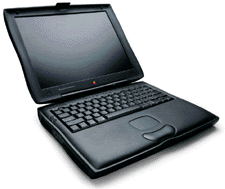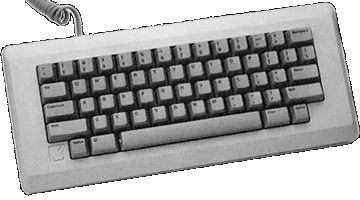PowerBook G3 Series

Essentials
Family: PowerBook G3/G4
Codename: Main Street, Wall Street
Gestalt ID: 312
Minimum OS: 8.1
Maximum OS: 10.2.8
Introduced: May 1998
Terminated: August 1998
Processor
CPU: PowerPC 750 "G3"
CPU Speed: 233/250/292 MHz
FPU: integrated
Bus Speed: 83 MHz
Register Width: 32-bit
Data Bus Width: 64-bit
Address Bus Width: 32-bit
Level 1 Cache: 32 kB data, 32 kB instruction
Level 2 Cache: 1 MB backside, 1:2
ROM: 4 MB
RAM Type: SO-DIMM
Minimum RAM Speed: 100 MHz
Onboard RAM: 0 MB
RAM slots: 2
Maximum RAM: 192 MB
Expansion Slots: 2 Type II or 1 Type III PC Card
Video
Screen: 12.1/13.3/14.1" active matrix TFT
Max Resolution: 1024x768
Video Out: VGA, s-video
Storage
Hard Drive: 2 GB
ATA Bus: IDE
Floppy Drive: removable 1.4 MB SuperDrive
Zip Drive: optional
Optical Drive: 24x CD-ROM or optional DVD-ROM
Input/Output
ADB: 1
Serial: 2 Mini DIN-8
SCSI: HDI-30
Audio Out: stereo 16 bit mini
Audio In: stereo 16 bit mini
Speaker: stereo
Microphone: mono
Networking
Ethernet: 10Base-T
Miscellaneous
Power: 45 Watts
Dimensions: 2" H x 12.7" W x 10.4" D
Weight: 7.5 lbs.
Notes
The 233 MHz models used a PPC 740 processor, and had a 66 MHz bus and no backside cache. The 12.1" models used a 16 bit, 832x624 passive matrix screen, and had a gestalt ID of 314.
Announced in March 1998, The PowerBook G3 Series was an entirely new design, which resembled its predecessor only in name. The G3 Series was the first Built-to-Order PowerBook line, and filled Apple's PowerBook offerings, from low to high end, with a single motherboard design. The G3 Series was available with a variety of BTO options including a 233, 250 or 292 MHz PPC750 processor and either a 12" passive-matrix screen, a 13.3" TFT Active Matrix screen, or an incredible 14.1" TFT Active Matrix Screen. All models included two RAM slots which used industry standard RAM modules (the same used in most IBM Thinkpads), hardware 2D and 3D Graphics acceleration, a VGA port, and 4 Mbps IrDA. The G3 Series had a large, redesigned keyboard which included a new Function button allowing the keyboard to take on the functionality of a full size 105-key keyboard. It had 2 PC-card slots, which were CardBus compliant (a powerbook first), and the 13.3" and 14.1" models included an S-Video output. The G3 Series had two drive bays, either of which could hold a battery or a wide array of 3.5" expansion devices, such as floppy or zip modules. The right drive bay could also accommodate larger 5.25" devices. The PowerBook G3 Series started at $2,299 for 233 MHz with no floppy drive and a 12" screen, and cost around $7,000 fully loaded. The PowerBook G3 Series was replaced at the end of the summer, by a second revision of the same design.
Picture Credits:
Apple, Inc.
